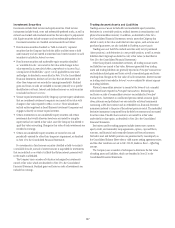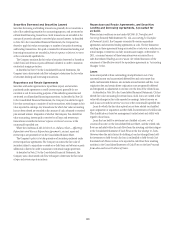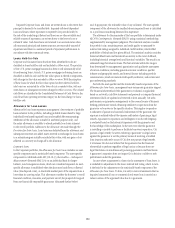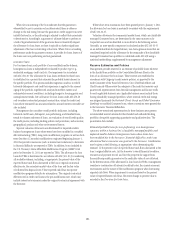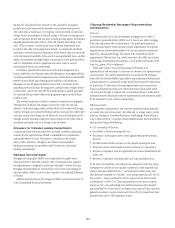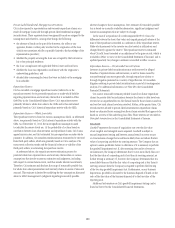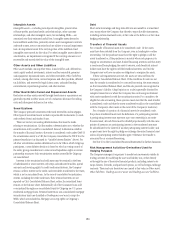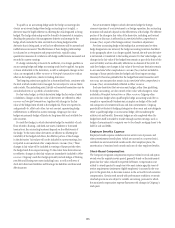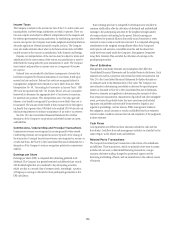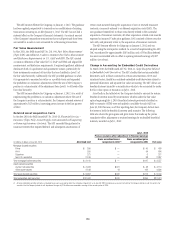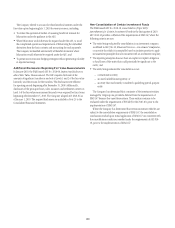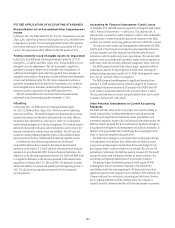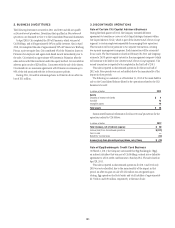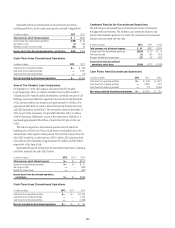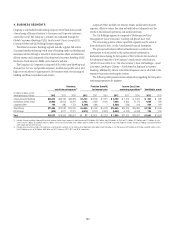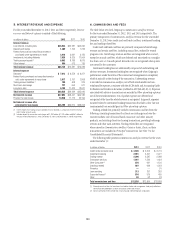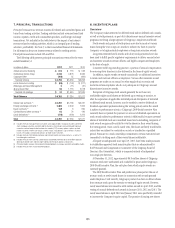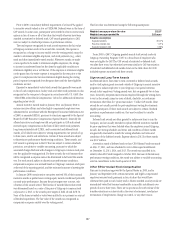Citibank 2012 Annual Report Download - page 179
Download and view the complete annual report
Please find page 179 of the 2012 Citibank annual report below. You can navigate through the pages in the report by either clicking on the pages listed below, or by using the keyword search tool below to find specific information within the annual report.157
ACCOUNTING CHANGES
OCC Chapter 7 Bankruptcy Guidance
In the third quarter of 2012, the Office of the Comptroller of the Currency
(OCC) issued guidance relating to the accounting for mortgage loans
discharged through bankruptcy proceedings pursuant to Chapter 7 of the
U.S. Bankruptcy Code (Chapter 7 bankruptcy). Under this OCC guidance,
the discharged loans are accounted for as troubled debt restructurings
(TDRs). These TDRs, other than FHA-insured loans, are written down to their
collateral value less cost to sell. FHA-insured loans are reserved for, based on
a discounted cash flow model. As a result of implementing this guidance,
Citigroup recorded an incremental $635 million of charge-offs in the third
quarter of 2012, the vast majority of which related to loans that were current.
These charge-offs were substantially offset by a related loan loss reserve
release of approximately $600 million, with a net reduction in pretax income
of $35 million. In the fourth quarter of 2012, Citigroup recorded a benefit
to charge-offs of approximately $40 million related to finalizing the impact
of this OCC guidance. Furthermore, as a result of this OCC guidance, TDRs
increased by $1.7 billion, and non-accrual loans increased by $1.5 billion in
the third quarter of 2012 ($1.3 billion of which was current).
Presentation of Comprehensive Income
In June 2011, the FASB issued ASU No. 2011-05, Comprehensive Income
(Topic 220): Presentation of Comprehensive Income. The ASU requires
an entity to present the total of comprehensive income, the components of
net income, and the components of other comprehensive income (OCI)
either in a single continuous statement of comprehensive income or in two
separate but consecutive statements. Citigroup has selected the two-statement
approach. Under this approach, Citi is required to present components of net
income and total net income in the Statement of Income. The Statement of
Comprehensive Income follows the Statement of Income and includes the
components of OCI and a total for OCI, along with a total for comprehensive
income. The ASU removed the option of reporting other comprehensive
income in the statement of changes in stockholders’ equity. This ASU became
effective for Citigroup on January 1, 2012 and a Statement of Comprehensive
Income is included in these Consolidated Financial Statements. See “Future
Application of Accounting Standards” below for further discussion.
Credit Quality and Allowance for Credit Losses Disclosures
In July 2010, the FASB issued ASU No. 2010-20, Receivables (Topic
310): Disclosures about Credit Quality of Financing Receivables
and Allowance for Credit Losses. The ASU required a greater level of
disaggregated information about the allowance for credit losses and the
credit quality of financing receivables. The period-end balance disclosure
requirements for loans and the allowance for loan losses were effective for
reporting periods ended on or after December 15, 2010 and were included
in the Company’s 2010 Annual Report on Form 10-K, while disclosures
for activity during a reporting period in the loan and allowance for
loan losses accounts were effective for reporting periods beginning on
or after December 15, 2010 and were included in the Company’s Forms
10-Q beginning with the first quarter of 2011 (see Notes 16 and 17 to
the Consolidated Financial Statements). The troubled debt restructuring
disclosure requirements that were part of this ASU became effective in the
third quarter of 2011 (see below).
Troubled Debt Restructurings (TDRs)
In April 2011, the FASB issued ASU No. 2011-02, Receivables (Topic 310):
A Creditor’s Determination of whether a Restructuring Is a Troubled
Debt Restructuring, to clarify the guidance for accounting for troubled debt
restructurings. The ASU clarified the guidance on a creditor’s evaluation of
whether it has granted a concession and whether a debtor is experiencing
financial difficulties, such as:
• Any shortfall in contractual loan payments is considered a concession.
• Creditors cannot assume that debt extensions at or above a borrower’s
original contractual rate do not constitute troubled debt restructurings,
because the new contractual rate could still be below the market rate.
• If a borrower doesn’t have access to funds at a market rate for debt with
characteristics similar to the restructured debt, that may indicate that the
creditor has granted a concession.
• A borrower that is not currently in default may still be considered to be
experiencing financial difficulty when payment default is considered
“probable in the foreseeable future.”
Effective in the third quarter of 2011, as a result of the Company’s adoption
of ASU 2011-02, certain loans modified under short-term programs
beginning January 1, 2011 that were previously measured for impairment
under ASC 450 are now measured for impairment under ASC 310-10-35.
At the end of the first interim period of adoption (September 30, 2011),
the recorded investment in receivables previously measured under ASC
450 was $1,170 million and the allowance for credit losses associated
with those loans was $467 million. The effect of adopting the ASU was
an approximate $60 million reduction in pretax income for the quarter
ended September 30, 2011.
Repurchase Agreements—Assessment of Effective Control
In April 2011, the FASB issued ASU No. 2011-03, Transfers and Servicing
(Topic 860): Reconsideration of Effective Control for Repurchase
Agreements. The amendments in the ASU remove from the assessment of
effective control: (i) the criterion requiring the transferor to have the ability
to repurchase or redeem the financial assets on substantially the agreed
terms, even in the event of default by the transferee, and (ii) the collateral
maintenance implementation guidance related to that criterion. Other
criteria applicable to the assessment of effective control are not changed by
the amendments in the ASU.


